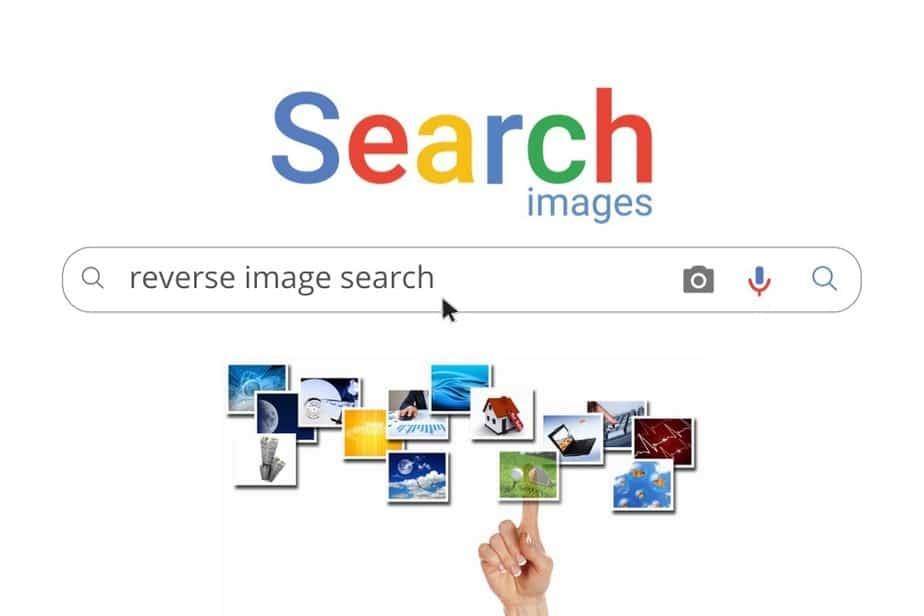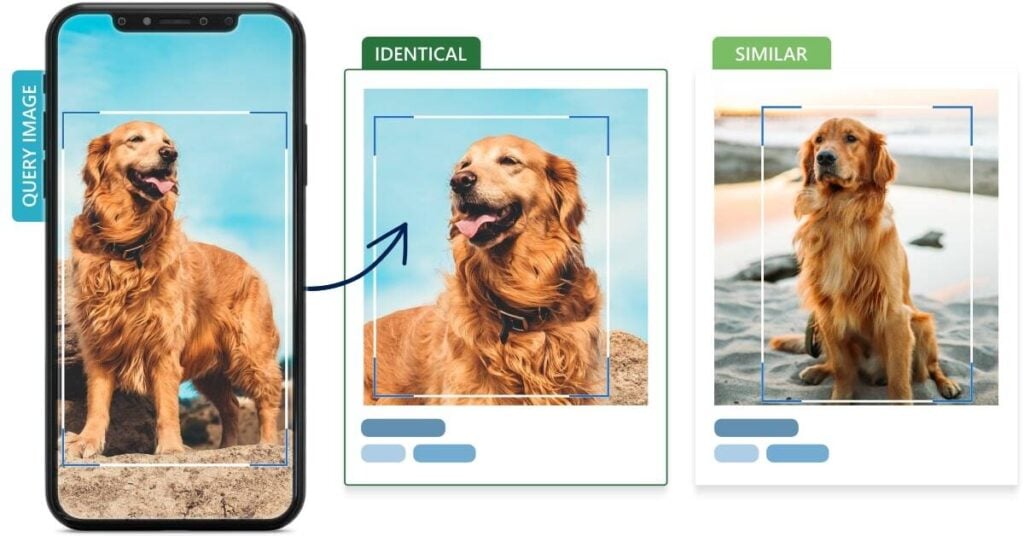What is Visual Search and How Does it Work?
Visual search is a revolutionary technology that enables users to search for information using images instead of text. This innovative approach to search has been gaining momentum in recent years, with major search engines like Google and Bing incorporating visual search capabilities into their platforms. But how does visual search work, and what makes it so powerful?
At its core, visual search relies on sophisticated algorithms that can analyze and understand the content of an image. These algorithms use machine learning and artificial intelligence to identify objects, patterns, and features within an image, and then match them to relevant search results. This process is made possible by the vast amounts of data and computational power available to search engines, which enable them to process and analyze vast numbers of images in real-time.
One of the key benefits of visual search is its ability to provide more accurate and relevant results than traditional text-based search. By analyzing the visual content of an image, search engines can better understand the context and intent behind a search query, and provide results that are more closely tailored to the user’s needs. For example, if a user searches for information using an image of a specific product, visual search can provide results that include information about the product, such as its price, availability, and reviews.
Visual search is also becoming increasingly important in the digital landscape, as more and more users turn to images and videos to communicate and access information. With the rise of social media and e-commerce, images are becoming a primary means of communication and commerce, and visual search is poised to play a major role in this shift. By providing a more intuitive and effective way to search for information, visual search is likely to become an essential tool for users in the years to come.
In fact, many users are already using visual search to find answers to questions like “how can you search with a picture” of a specific object or product. By using visual search, users can quickly and easily find the information they need, without having to type out a lengthy search query.
How to Search with a Picture: A Step-by-Step Guide
Searching with a picture is a straightforward process that can be done using popular search engines like Google and Bing. Here’s a step-by-step guide on how to search with a picture:
Step 1: Open a search engine like Google or Bing and click on the camera icon or the “Search by image” button.
Step 2: Upload the image you want to search for or enter the URL of the image. You can also drag and drop the image into the search bar.
Step 3: The search engine will analyze the image and provide you with relevant search results. You can then browse through the results to find the information you’re looking for.
For example, if you want to search for information about a specific product, you can upload a picture of the product and the search engine will provide you with results that include information about the product, such as its price, availability, and reviews.
Searching with a picture can be a powerful tool for finding answers to questions like “how can you search with a picture” of a specific object or product. By using visual search, you can quickly and easily find the information you need, without having to type out a lengthy search query.
In addition to searching with a picture, you can also use the “Reverse image search” feature to find answers to questions like “What is this object?” or “Where did I see this image before?”. This feature allows you to upload an image and find similar images or information about the object in the image.
Here’s an example of how to use the “Reverse image search” feature on Google:

As you can see, the “Reverse image search” feature provides you with a list of similar images and information about the object in the image. You can then browse through the results to find the information you’re looking for.
Reverse Image Search: A Powerful Tool for Finding Answers
Reverse image search is a powerful tool that allows users to search for information about an image by uploading the image itself. This feature is particularly useful when trying to find answers to questions like “What is this object?” or “Where did I see this image before?”
Reverse image search works by analyzing the visual content of an image and matching it to similar images or information about the object in the image. This process is made possible by advanced algorithms and machine learning techniques that can identify patterns and features within an image.
One of the benefits of reverse image search is its ability to provide more accurate and relevant results than traditional text-based search. By analyzing the visual content of an image, search engines can better understand the context and intent behind a search query, and provide results that are more closely tailored to the user’s needs.
For example, if a user wants to know more about a specific product, they can upload a picture of the product and use reverse image search to find information about it. This can include reviews, prices, and availability, as well as similar products or alternatives.
Reverse image search can also be used to find answers to questions like “how can you search with a picture” of a specific object or product. By using reverse image search, users can quickly and easily find the information they need, without having to type out a lengthy search query.
However, it’s worth noting that reverse image search is not without its limitations. For example, the accuracy of the results can depend on the quality of the image and the algorithms used to analyze it. Additionally, reverse image search may not always be able to provide the exact information that the user is looking for.
Despite these limitations, reverse image search remains a powerful tool for finding answers to questions and discovering new information. By using this feature, users can unlock the full potential of visual search and gain a deeper understanding of the world around them.
Using Google Lens for Visual Search
Google Lens is a visual search app that allows users to search for information using their smartphone camera. This app is a powerful tool for visual search, and can be used to find answers to questions like “how can you search with a picture” of a specific object or product.
To use Google Lens, users simply need to open the app and point their camera at the object or image they want to search for. The app will then analyze the image and provide relevant search results, including information about the object, its price, and where it can be purchased.
One of the key features of Google Lens is its object recognition capabilities. The app can identify objects in an image and provide information about them, including their name, description, and price. This feature is particularly useful for finding products online or identifying objects in the real world.
Google Lens also includes a text scanning feature, which allows users to scan text in an image and search for it online. This feature is useful for finding information about a specific topic or product, and can be used to search for answers to questions like “how can you search with a picture” of a specific object or product.
In addition to its object recognition and text scanning features, Google Lens also includes a number of other tools and features that make it a powerful visual search app. These include the ability to search for similar images, find information about a specific location, and even translate text in an image.
Overall, Google Lens is a powerful visual search app that can be used to find answers to a wide range of questions. Its object recognition and text scanning features make it a useful tool for finding products online, identifying objects in the real world, and searching for information about a specific topic or product.
By using Google Lens, users can unlock the full potential of visual search and gain a deeper understanding of the world around them. Whether you’re looking for information about a specific product, trying to identify an object in the real world, or simply want to learn more about a particular topic, Google Lens is a powerful tool that can help you achieve your goals.
Other Visual Search Tools and Apps
In addition to Google Lens, there are several other visual search tools and apps available that can help users find answers to questions like “how can you search with a picture” of a specific object or product. Two popular alternatives are TinEye and CamFind.
TinEye is a reverse image search engine that allows users to search for images by uploading a picture or entering the URL of an image. TinEye’s algorithm analyzes the image and returns a list of similar images, as well as information about the image, such as its source and usage.
CamFind is another visual search app that allows users to search for information using their smartphone camera. CamFind’s algorithm recognizes objects in images and provides information about them, including their name, description, and price.
Both TinEye and CamFind offer similar features and functionality to Google Lens, but with some key differences. For example, TinEye is more focused on reverse image search, while CamFind is more geared towards object recognition and price comparison.
In comparison to Google Lens, TinEye and CamFind have some advantages and disadvantages. TinEye’s algorithm is more advanced and can recognize images with greater accuracy, but it is also more limited in its functionality. CamFind, on the other hand, offers more features and functionality, but its algorithm is not as advanced as Google Lens.
Ultimately, the choice of visual search tool or app will depend on the user’s specific needs and preferences. Whether you’re looking for a reverse image search engine, an object recognition app, or a price comparison tool, there are several options available that can help you find answers to questions like “how can you search with a picture” of a specific object or product.
By exploring these different options and comparing their features and functionality, users can find the visual search tool or app that best meets their needs and helps them achieve their goals.
The Future of Visual Search: Trends and Innovations
As visual search technology continues to evolve, we can expect to see new trends and innovations emerge in the coming years. One of the most exciting developments is the integration of augmented reality (AR) into visual search. AR-powered visual search will allow users to search for information about objects in their environment, using their smartphone camera to overlay digital information onto the real world.
Another trend that is expected to shape the future of visual search is the use of artificial intelligence (AI) to improve image recognition and analysis. AI-powered image recognition will enable visual search engines to better understand the content of images, and provide more accurate and relevant results.
In addition to these trends, we can also expect to see the development of new visual search tools and apps that cater to specific industries or use cases. For example, visual search apps for healthcare, education, and e-commerce are already being developed, and are expected to become increasingly popular in the coming years.
As visual search technology continues to evolve, it is likely that we will see new and innovative applications of this technology emerge. For example, visual search could be used to help people with disabilities, such as visual impairments, to navigate and interact with their environment.
Overall, the future of visual search is exciting and full of possibilities. As technology continues to evolve, we can expect to see new trends and innovations emerge that will shape the way we search for information and interact with the world around us.
One of the key questions that people may ask when considering the future of visual search is “how can you search with a picture” of a specific object or product. The answer to this question is likely to become increasingly complex as visual search technology continues to evolve, but one thing is certain: visual search is here to stay, and it will continue to shape the way we search for information and interact with the world around us.
Common Use Cases for Visual Search
Visual search has a wide range of applications and can be used in various scenarios to find answers to questions like “how can you search with a picture” of a specific object or product. Here are some common use cases for visual search:
1. Finding products online: Visual search can be used to find products online by searching for images of the product. This can be particularly useful for finding products that are difficult to describe in words, such as fashion items or home decor.
2. Identifying plants and animals: Visual search can be used to identify plants and animals by searching for images of the species. This can be useful for nature enthusiasts, botanists, and zoologists.
3. Solving puzzles: Visual search can be used to solve puzzles by searching for images of the puzzle pieces. This can be useful for puzzle enthusiasts and can help to improve problem-solving skills.
4. Finding information about art and history: Visual search can be used to find information about art and history by searching for images of famous paintings, sculptures, and historical landmarks.
5. Identifying objects in the environment: Visual search can be used to identify objects in the environment by searching for images of the object. This can be useful for people who are visually impaired or have difficulty identifying objects.
These are just a few examples of the many use cases for visual search. By using visual search, users can find answers to a wide range of questions and can improve their ability to identify and understand objects in the world around them.
One of the key benefits of visual search is its ability to provide more accurate and relevant results than traditional text-based search. By analyzing the visual content of an image, search engines can better understand the context and intent behind a search query, and provide results that are more closely tailored to the user’s needs.
Overall, visual search is a powerful tool that can be used in a wide range of scenarios to find answers to questions and improve understanding of the world around us.
Best Practices for Effective Visual Search
To get the most out of visual search, it’s essential to follow best practices that can help you achieve accurate and relevant results. Here are some tips to help you prepare images for search, use keywords and filters, and evaluate search results:
1. Prepare images for search: When preparing images for visual search, make sure they are clear, well-lit, and in focus. Avoid using images with cluttered backgrounds or multiple objects, as this can make it difficult for the search engine to identify the object you’re looking for.
2. Use keywords and filters: Using keywords and filters can help you narrow down your search results and find more accurate matches. For example, if you’re searching for a specific product, you can use keywords like “product name” or “brand name” to find relevant results.
3. Evaluate search results: When evaluating search results, make sure to check the relevance and accuracy of the results. Look for results that match your search query and provide useful information about the object or product you’re looking for.
4. Use visual search tools and apps: There are many visual search tools and apps available that can help you search for information using images. Some popular options include Google Lens, TinEye, and CamFind.
5. Experiment with different search engines: Different search engines may provide different results for the same search query. Experimenting with different search engines can help you find the most accurate and relevant results.
By following these best practices, you can get the most out of visual search and find answers to questions like “how can you search with a picture” of a specific object or product. Remember to always evaluate search results carefully and use keywords and filters to narrow down your search results.
Visual search is a powerful tool that can help you find information and answers to questions quickly and easily. By using visual search effectively, you can save time and improve your productivity.








